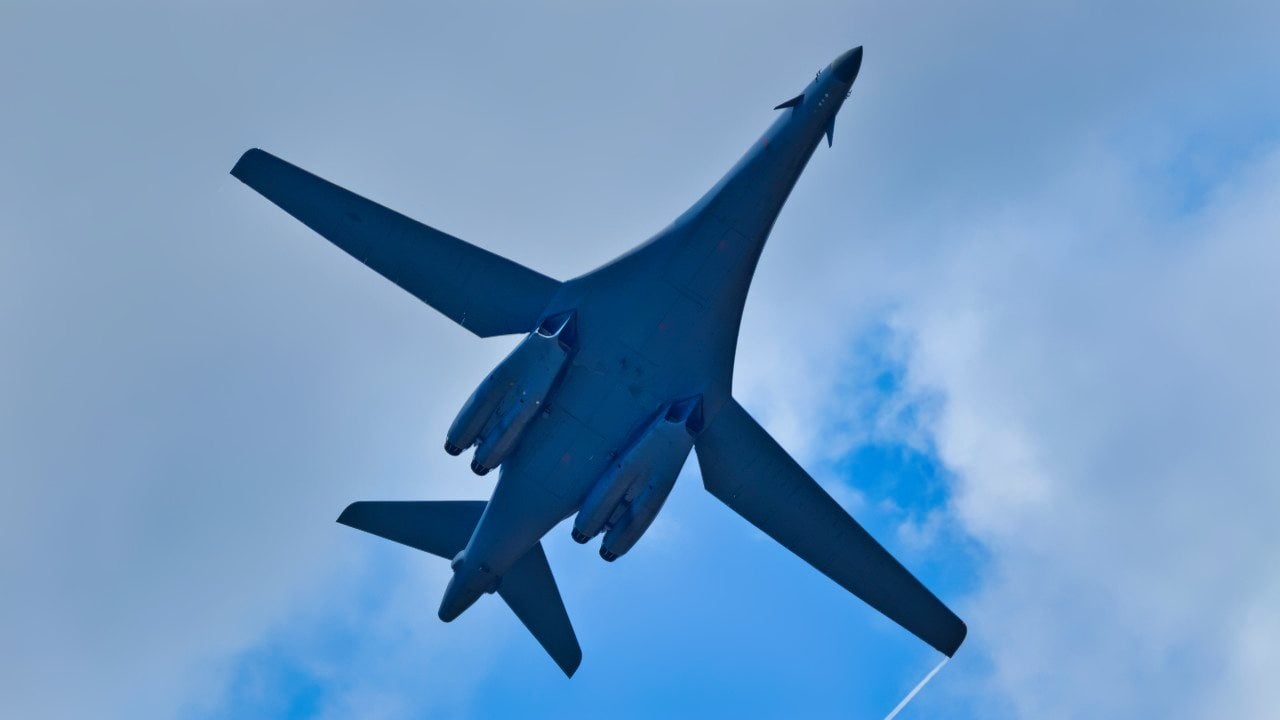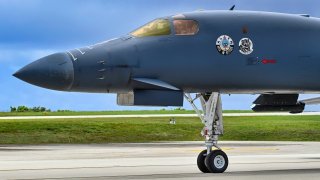U.S. Military Can't Stop Pulling B-1B Bombers from the Old 'Boneyard'
The U.S. Air Force is reactivating the B-1B Lancer bomber, tail number 86-0115, nicknamed "Rage," from storage to fill operational gaps. This is the second B-1B to be brought back into service recently, highlighting the need to maintain a robust strategic bomber fleet.
Bomber Rise from the Boneyard! The U.S. Air Force is reactivating the B-1B Lancer bomber, tail number 86-0115, nicknamed "Rage," from storage to fill operational gaps. This is the second B-1B to be brought back into service recently, highlighting the need to maintain a robust strategic bomber fleet.
Why Do It? With the B-21 Raider still years away from entering service, the Air Force is investing in regenerating older aircraft to meet the requirement of maintaining at least 92 active strategic bombers.
Old But Powerful: The B-1B, known for its significant munitions capacity, remains a critical component of U.S. airpower.
Strategic Boost: B-1B Lancer Bomber Rejoins U.S. Air Force Fleet
The U.S. Air Force is set to receive a familiar aircraft. A B-1B Lancer strategic bomber that was retired is close to coming back to service to fill pressing operational gaps.
B-1B Lancer Back from the “Dead”
Nicknamed “Rage” and with tail number 86-0115, the B-1B Lancer has been regenerated and will soon be once again operational. This is the second B-1 Lancer bomber to come back from the “dead” in recent months. Back in March, the Air Force regenerated another strategic bomber to replace an aircraft that caught fire.
“At the request of Air Force Global Strike Command, Air Force Materiel Command is in the process of regenerating a B-1B to replace aircraft -0126, which was undergoing heavy structures repair development at Boeing-Palmdale,” an Air Force spokesperson told Air & Space Forces Magazine.
The B-1 Lancer is a supersonic strategic bomber and the aircraft that can carry the most munitions in the entire U.S. military (75,000 pounds). Alongside the B-52 Stratofortress and B-2 Spirit, the B-1 Lancer make up America’s strategic bomber fleet.
By law, the Air Force needs to have an active strategic bomber force of at least ninety-two aircraft.
“Analysis determined regenerating an aircraft in [309th Aerospace Maintenance and Regeneration Group (AMARG)] storage could be accomplished faster, at lower cost and risk, than continuing the Boeing repair project,” the Air Force spokesperson added.
Like the B-2 Spirit, the B-1 Lancer is nearing its retirement, with the B-21 Raider stealth strategic bomber set to replace the two aircraft. However, their retirement is still a few years away, and that is the reason for investing in bringing back old aircraft.
It is not uncommon for the Air Force, or indeed any other service that operates aircraft, to bring old fighter jets, transport aircraft, helicopters, or, as in this case, bombers back from the “dead.”
The “Boneyard”
The famous “Boneyard” at Davis-Monthan Air Force Base in Arizona stores approximately 4,000 aircraft of dozens of types. The 309th AMARG, which is tasked with maintaining and preserving these aircraft, brings back to life as many as 100 aircraft of all types every year; these aircraft go on to serve in the U.S. military, federal agencies, or foreign military partners.
When an aircraft is retired to the “Boneyard,” the 309th AMARG classifies it according to its condition and the desires of the retiring service. After a thorough review, the aircraft is put into one of four categories.

First, there are Type 1000 aircraft stored for long-term purposes and kept intact for future use.
Second, there are Type 2000 aircraft that are kept but broken down and used as spare parts to serve existing aircraft when necessary.
Third, there are Type 3000 aircraft that are kept intact, have their engines run frequently, and have their systems maintained. These are the aircraft that are most likely to return to service.
Finally, there are Type 4000 aircraft that are sold as whole or in parts to interested parties.
About the Author:
Stavros Atlamazoglou is a seasoned defense journalist specializing in special operations and a Hellenic Army veteran (national service with the 575th Marine Battalion and Army HQ). He holds a BA from Johns Hopkins University and an MA from Johns Hopkins’ School of Advanced International Studies (SAIS). His work has been featured in Business Insider, Sandboxx, and SOFREP.
All images are Creative Commons.


